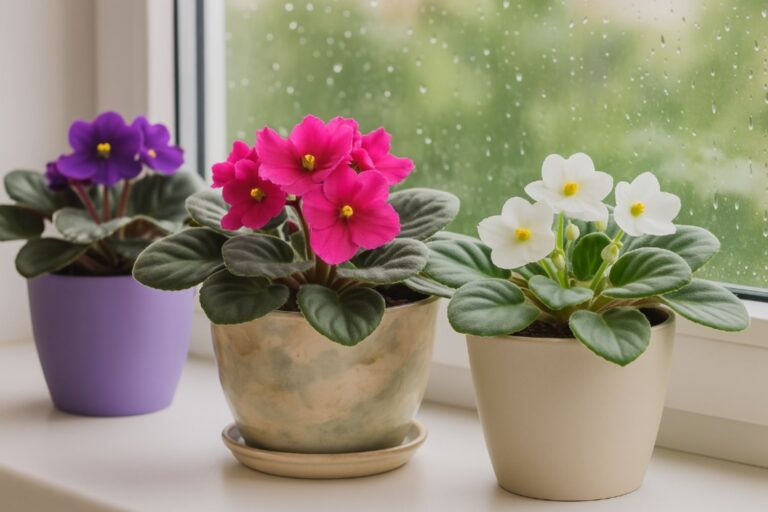February may be the shortest month of the year, but when it comes to flowers, it doesn’t hold back. Unlike most months that have just one or two official blooms, February birth flowers are extra special—featuring not just one, but three stunning options: violets, irises, and primroses. Each of these flowers carries its own unique symbolism, beauty, and history, making them perfect for bouquets, gardens, or meaningful gifts.
So, whether you’re celebrating a February birthday or just love learning about flower meanings, you’re in for a treat. Let’s dive into what makes these February birth flowers so special!
What Are Birth Flowers?
Flowers have always been more than just decoration—they tell stories, carry meanings, and even symbolize personality traits. That’s where birth flowers come in. Much like birthstones and semi-precious crystals, each month of the year has a flower (or in February’s case, three!) that represents it.
But where did this idea originated?
The tradition of birth month flowers dates back centuries, with roots in ancient Roman celebrations and even early Christian customs. Romans associated flowers with gods and goddesses, linking certain blooms to different times of the year.
Over time, these floral connections evolved, and by the Victorian era, flowers were being used to send messages—an entire language of blooms known as floriography. This made birth flowers even more significant, as they were thought to reflect the personality of people born in that month.
Some believe that birth flowers can influence a person’s traits, much like zodiac signs. Others see them as symbols of luck, protection, or blessings for the year ahead. Whether you buy into the deeper meaning or just enjoy the idea of a personal floral emblem, flowers by month remain a charming tradition that makes birthdays a little more special.
And for February? Well, it’s got three stunning blooms to its name—violets, irises, and primroses—each with its own story to tell.
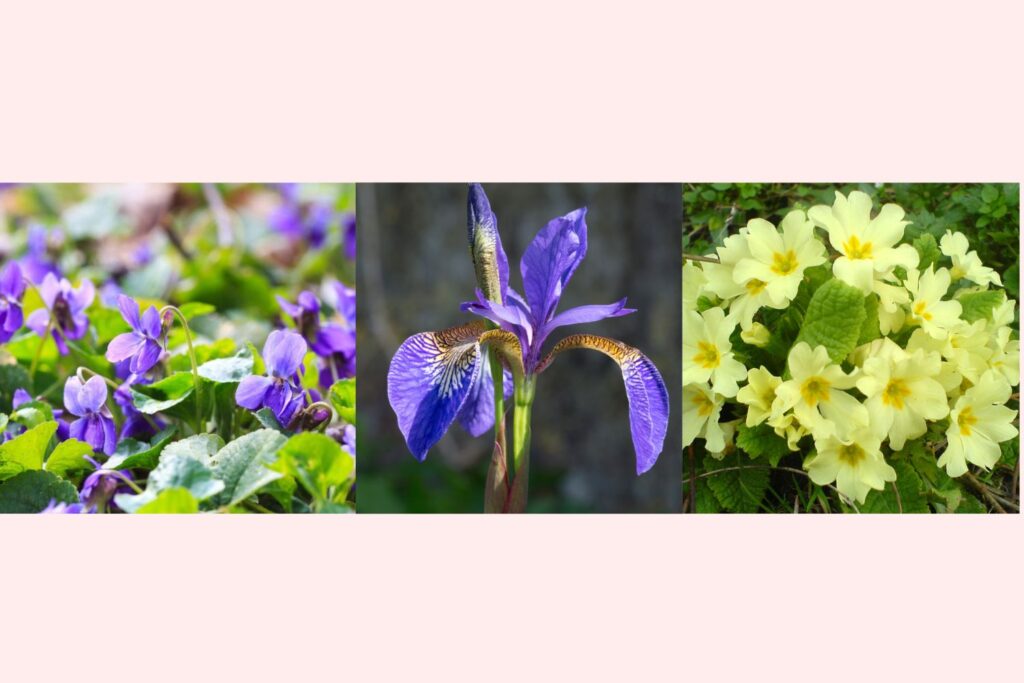
February Birth Flower: Violets
Violets are February’s quiet little rebels—small, unassuming, yet full of history and heart. They bloom low to the ground, often the first to break through winter’s fading frost, as if whispering that spring is near. Their petals, delicate as silk, hide a resilience few would expect, making them a perfect emblem of quiet strength and unwavering devotion.
But violets are more than just a pretty face. For centuries, they have found their way into medicine, perfumes, and even the kitchen. Their petals, once candied for royal desserts, are edible; their fragrance, so enchanting, was a staple in high-end perfumes before time diluted their scent.
Yet, beyond their practical gifts, violets speak a language of their own.
Violets: History and Symbolism
Violets have been woven into history, mythology, and tradition for ages. The ancient Greeks associated them with Aphrodite, the goddess of love, and used them in love potions. They also made violet-based wines, believing the flower had a calming effect on the mind.
The Romans weren’t far behind—they used violets to make perfumes and even as funeral flowers, believing they brought peace to the dead. Roman soldiers also carried violets into battle, thinking they symbolized courage and protection.
In medieval Europe, violets became symbols of modesty and humility, often linked to the Virgin Mary in Christian tradition. Monks grew them in monastery gardens, using them in herbal medicine to treat everything from headaches to heart problems.
By the Victorian era, violets took on a more romantic meaning. Flowers were used to send secret messages (a practice known as floriography), and violets specifically meant “I’ll always be true”—a perfect way to express devotion without words.
Violets: Colors and Their Meanings
While most people think of violets as, well, violet, these flowers come in a few different shades, each with its own special meaning:
- Purple Violets – Loyalty, wisdom, and truth. The classic shade, often linked to faithfulness.
- Blue Violets – Love, devotion, and peace. A symbol of calmness and sincerity.
- White Violets – Innocence, purity, and new beginnings. Often seen in religious or spiritual contexts.
- Yellow Violets – Happiness, cheerfulness, and good fortune. A rare but bright pop of color!
Whatever the shade, violets carry a timeless charm, making them a meaningful gift or a beautiful addition to any garden.
Violets: Growing and Caring
Want to grow violets? Good news—they’re easy to care for and will reward you with blooms year after year. Here’s what you need to know:
- Light: They love partial shade but can tolerate some morning sun.
- Soil: Rich, moist but well-draining soil works best.
- Watering: Keep the soil slightly damp, but don’t overwater—they hate soggy roots.
- Temperature: They prefer cool weather and can even handle a light frost.
- Propagation: Violets self-seed, meaning once planted, they’ll spread naturally. If you let them, they’ll happily take over a shady garden patch!
Bonus fact: Wild violets are known for their sweet scent, but many modern cultivated varieties have lost their fragrance due to hybridization. If you want that classic violet perfume, look for Viola odorata, the original scented violet.
Whether planted in a garden, gifted in a bouquet, or even sprinkled over a dessert (yes, they’re edible!), violets are a small but mighty symbol of love, faith, and endurance—perfect for those born in February.
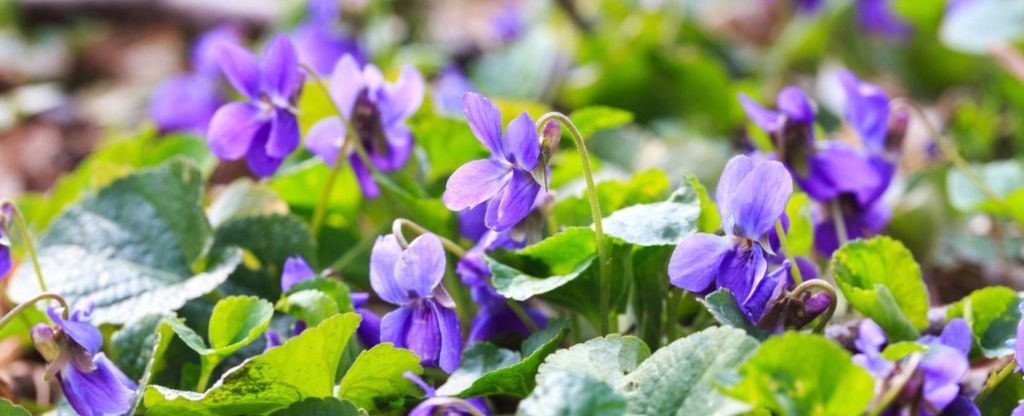
February Birth Flower: Irises
If violets are February’s quiet rebels, irises are its bold dreamers—tall, striking, and impossible to ignore. Unlike their low-growing floral counterpart, irises command attention with their dramatic petals and vivid hues, often standing as a symbol of hope, wisdom, and courage. They thrive in some of the harshest conditions, pushing through cold and damp soil to bloom with a regal elegance, much like the February-born souls they represent.
But irises are more than just their beauty. For centuries, they’ve been woven into mythology, art, and royal history, symbolizing everything from divine messages to power and prestige. Their name itself comes from the Greek word for “rainbow,” fitting for a flower that blooms in a dazzling array of colors—each carrying its own meaning.
Irises: History and Symbolism
Irises have long been a flower of the gods and kings. In ancient Greece, they were believed to be the messengers of the gods, named after Iris, the goddess of the rainbow, who was said to link heaven and earth. Greeks planted irises on the graves of women, believing the flowers would guide their souls safely to the afterlife.
The Egyptians also admired irises, incorporating their shape into decorative carvings and associating them with royalty. By the Middle Ages, the fleur-de-lis, a stylized iris, became the official symbol of French monarchy, representing power, victory, and divine right.
Irises also played a significant role in floriography, the Victorian language of flowers. They symbolized wisdom, faith, and valor, often given as a sign of deep respect or admiration. Today, they remain a symbol of courage and hope, making them a perfect bloom for February—a month that bridges the harshness of winter with the promise of spring.
Irises: Unique Characteristics
What makes irises so special? For starters, their petal structure is unlike any other flower. They have three upright petals (called standards) and three downward-curving petals (called falls), giving them a majestic, crown-like appearance. Some even have a beard—a fuzzy stripe running down the center of the falls—that acts as a guide for pollinators.
Irises also stand out for their wide range of colors, living up to their name as the “rainbow flower.” Each shade carries its own meaning:
- Blue & Purple Irises – Wisdom, royalty, and admiration
- Yellow Irises – Passion, positivity, and courage
- White Irises – Purity, innocence, and spirituality
- Red & Orange Irises – Energy, confidence, and enthusiasm
And beyond their beauty, irises have practical uses. Certain species, like Iris germanica, are used in perfumery and herbal medicine. The orris root, derived from iris rhizomes, has been prized for centuries for its ability to hold scent and is still used in some high-end fragrances today.
Irises: Growing and Caring
Want to grow irises? They’re hardy, low-maintenance, and surprisingly adaptable, thriving in a range of climates. Here’s what they need:
- Light: Irises love full sun—at least six hours of direct sunlight daily for best blooms.
- Soil: They prefer well-drained, slightly acidic to neutral soil. Heavy, wet soil can cause root rot.
- Watering: Once established, irises are drought-tolerant, needing only occasional watering. Keep the soil slightly moist when first planting.
- Temperature: Hardy in zones 3-9, most irises can survive cold winters and bloom year after year.
- Propagation: Unlike violets, irises spread through rhizomes—thick, underground stems that grow horizontally. Every few years, they should be divided to prevent overcrowding.
Bonus fact: Some irises, like the Siberian iris, are known for their deer and rabbit resistance, making them a great choice for gardens prone to hungry visitors.
Whether standing tall in a garden, decorating a bouquet, or symbolizing wisdom in ancient traditions, irises are a true showstopper—bold, resilient, and full of meaning, just like the people born in February.
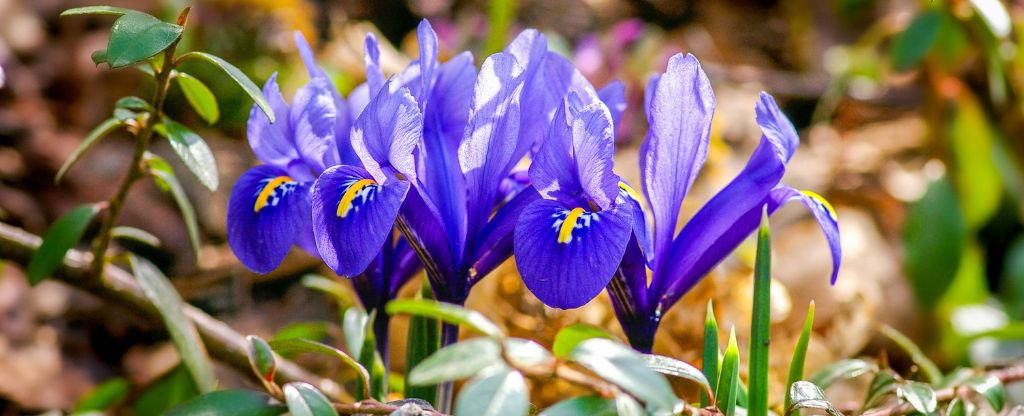
February Birth Flower: Primroses
If violets are the quiet romantics and irises the bold visionaries, primroses are February’s gentle harbingers of spring. Delicate yet persistent, these charming flowers often bloom while frost still lingers, bringing the first splash of color to cold landscapes. Their name, derived from the Latin primus, meaning “first,” perfectly captures their role as one of the earliest signs of the changing season.
But primroses are more than just pretty garden flowers. For centuries, they have been symbols of youth, renewal, and deep love, appearing in folklore, literature, and herbal medicine.
Soft in appearance but surprisingly resilient, they reflect the essence of February-born souls—hopeful, enduring, and quietly enchanting.
Primroses: History and Symbolism
Primroses have been woven into folklore and traditions across cultures for centuries. In Celtic mythology, they were believed to be fairy flowers, forming gateways to the spirit world. It was said that placing a bouquet of primroses on a doorstep would invite fairies into the home—good luck, if you treated them well!
During the Victorian era, primroses carried a deep, personal message. They symbolized young love and devotion, often given as a subtle way of saying, “I can’t live without you.” A bouquet of primroses was a sign of deep affection, making them a popular flower among lovers and secret admirers.
Beyond romance, primroses also symbolized protection and renewal. In medieval Europe, they were planted near doorways to ward off evil spirits and bad luck. Even today, they remain a symbol of hope and fresh beginnings, making them a fitting bloom for February—a month caught between winter’s end and spring’s first stirrings.
Primroses: Unique Characteristics
Primroses are special not just for their early bloom time, but also for their wide variety of colors and shapes. Unlike violets and irises, which have distinctive petal structures, primroses come in an astonishing rainbow of hues—each with its own meaning:
- Pink Primroses – Love, affection, and kindness
- Yellow Primroses – Happiness, new beginnings, and warmth
- White Primroses – Purity, protection, and spirituality
- Red Primroses – Passion and strength
- Purple Primroses – Creativity and mystery
One of the most fascinating aspects of primroses is their “evening blooming” nature—some species, like the evening primrose, open their petals in the late afternoon or dusk, attracting nocturnal pollinators like moths. Their fragrance is light yet sweet, subtly perfuming the air.
Primroses are also known for their medicinal properties. Traditionally, they were used to treat headaches, colds, and insomnia. Even today, the oil extracted from evening primrose seeds is used in herbal medicine for its potential benefits in skin health and hormonal balance.
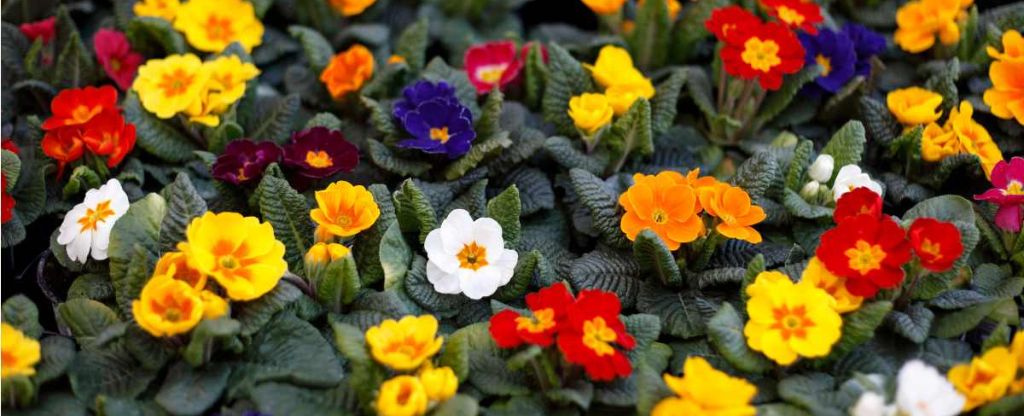
Primroses: Growing and Caring
Primroses may look delicate, but they are tough, cold-hardy flowers that can brighten gardens before most other plants wake from winter’s slumber. Here’s how to keep them thriving:
- Light: They prefer partial shade, especially in warmer climates. Too much direct sun can scorch their leaves.
- Soil: Moist, well-drained soil is key. They thrive in humus-rich environments, mimicking their natural woodland habitat.
- Watering: Keep the soil consistently moist but not waterlogged. They dislike drought conditions.
- Temperature: Many varieties are cold-hardy and can survive frost, making them perfect for early spring gardens.
- Propagation: Primroses can be grown from seeds, division, or cuttings. They tend to self-seed, meaning they’ll often return year after year with minimal effort.
Bonus fact: Primroses are beloved by bees and other early pollinators, providing a crucial food source when few other flowers are blooming. Planting them in your garden helps support local pollinators as they emerge from winter hibernation.
Whether they’re brightening up a garden bed, decorating a bouquet, or carrying whispers of old fairy tales, primroses are a symbol of quiet beauty and renewal—a perfect match for February’s transitional spirit.
Fun Facts About February Birth Flowers
February’s birth flowers—violets, irises, and primroses—are more than just pretty petals. They have rich histories, unexpected uses, and fascinating quirks. Here are some fun facts you probably didn’t know:
- Violets were once used as a love potion – Ancient Greeks believed violets had magical properties and used them in romantic elixirs to spark passion and devotion.
- Napoleon Bonaparte was obsessed with violets – The French emperor adopted the violet as his personal symbol and promised to return from exile “with the violets in spring.” His supporters even called themselves “Les Violettes.”
- Irises inspired the French royal emblem – The iconic fleur-de-lis symbol comes from the shape of an iris and was used by French kings to represent power, faith, and victory.
- Primroses are connected to fairies – According to Celtic folklore, primroses were thought to open gateways to the fairy realm—placing them on your doorstep was said to invite good fortune.
- Violets are edible (and delicious!) – Candied violets were a favorite in Victorian desserts, and fresh violet petals can still be used today to decorate cakes, salads, and cocktails.
- Irises were once used in perfumes and medicine – The dried root of Iris germanica (called orris root) was a key ingredient in high-end fragrances and even used as a breath freshener in medieval times.
- Primroses bloom before winter fully ends – These early risers often push through frost-covered soil, bringing the first hints of spring before other flowers dare to wake up.
- Shakespeare loved violets – The famous playwright mentioned violets multiple times in his works, using them as symbols of faithfulness and fleeting beauty.
- Irises can grow in water – While most flowers hate wet feet, some iris species (like the Louisiana iris) thrive in swamps, ponds, and marshy areas.
- Primrose leaves are medicinal – Traditionally, primrose leaves were brewed into tea to help with colds, headaches, and anxiety—an old remedy that some herbalists still swear by today.
From royal emblems to fairy legends, February’s birth flowers have some pretty wild stories. Whether you admire their beauty, grow them in your garden, or snack on a candied violet, these blooms are full of surprises!
How to Use February Birth Flowers
Violets, irises, and primroses aren’t just meaningful—they’re versatile! Whether you want to gift them, decorate with them, or create a stunning bouquet, February’s birth flowers add a special touch. Here’s how to make the most of them:
1. In Bouquets and Arrangements
- Violets – Since violets are delicate, they’re best tucked into small bouquets or used as an accent flower alongside larger blooms. Try pairing them with roses or lilies for a romantic touch.
- Irises – These tall, elegant flowers steal the show in any arrangement. Mix them with tulips or greenery for a striking contrast.
- Primroses – Since primroses are often potted, they’re great for table centerpieces or as a filler flower in rustic-style bouquets.
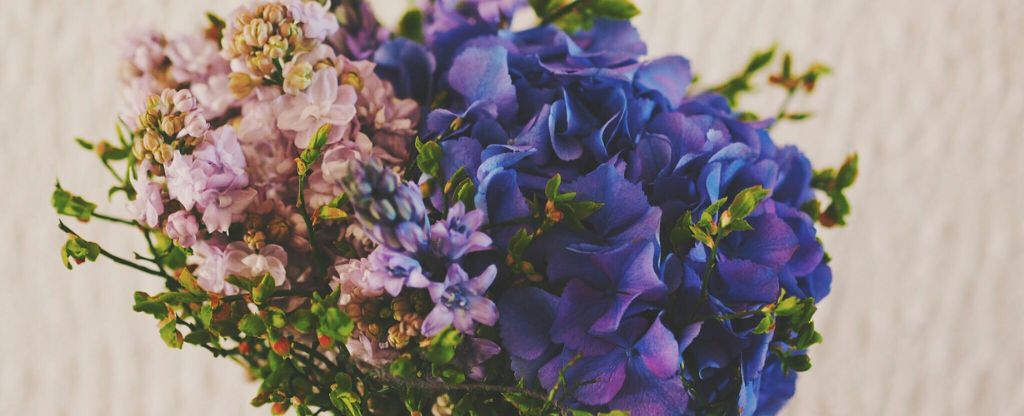
2. As Gifts
- Potted primroses – A long-lasting, low-maintenance gift that keeps blooming—perfect for a February birthday!
- Pressed violets in a frame – A sentimental and timeless keepsake, great for those who love unique, handmade gifts.
- Fresh iris bouquet – A bold and elegant floral arrangement that symbolizes wisdom and admiration—ideal for someone who inspires you.
- Candied violets – An unexpected but delightful gift! These edible flowers add a touch of old-world charm to desserts.
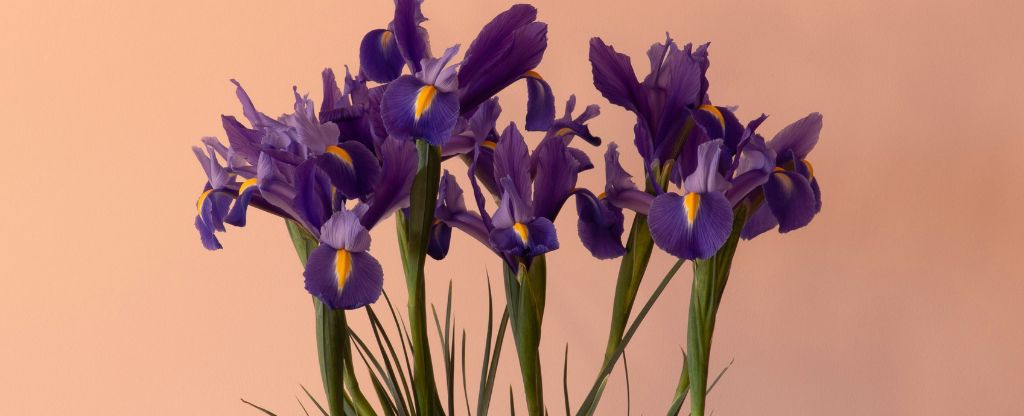
3. In Home Decor
- Dried violets in resin or glass – Use them in DIY coasters, bookmarks, or wall art for a subtle floral accent.
- Iris-filled vases – Their height and vibrant color make them a statement piece for entryways or dining tables.
- Primroses in window boxes – Bring color to your home’s exterior by planting primroses in decorative planters—they thrive in cooler weather!
Whether you’re giving them as a gift, arranging them in a bouquet, or using them to brighten your home, February’s birth flowers are a beautiful and meaningful way to celebrate.
Their history, symbolism, and beauty make violets, irises, and primroses more than just flowers—they’re living reminders of love, renewal, and resilience. Whether tucked into a bouquet, planted in a garden, or gifted as a thoughtful surprise, these blooms bring warmth to even the coldest February days.
For a truly special touch, explore Ode à la Rose’s signature bouquets, thoughtfully designed to capture the essence of every season. With fresh, elegant arrangements that celebrate nature’s beauty, you can bring February’s timeless blooms into your home—or gift them to someone who deserves a little extra joy.

